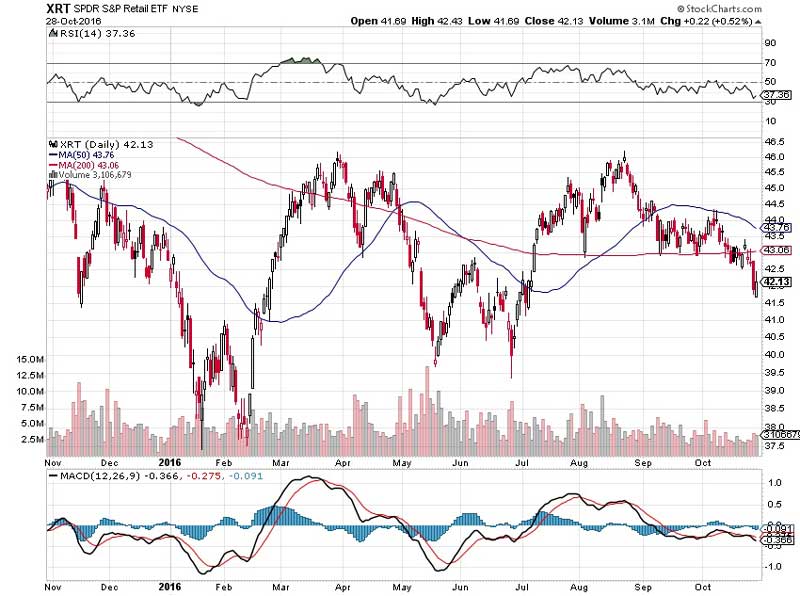As we ring in the month of November, we’re suddenly reminded of the fact that we have less than 60 days until Christmas — or, as liberals call it, December 25 day. Whatever your political persuasion, one thing is clear — we all have a lot of shopping ahead of us. While mass consumerism has taken on an extreme magnitude as of late, there’s fundamentally something endearing about gifting your friends and loved ones. Unfortunately, even this cherished philanthropic tradition is coming under economic fire.
As the Wall Street Journal reports, an increasing number of Americans are feeling pessimistic heading into the heart of the holiday season. The WSJ’s Jeffrey Sparshott writes, “U.S. consumer confidence matched its lowest level in two years in October as concerns about the economy grew ahead of the coming presidential election.The University of Michigan’s consumer-sentiment index dropped to 87.2 from 91.2 a month earlier. That matched the September 2015 reading as the weakest since October 2014.Economists surveyed by The Wall Street Journal had expected consumer sentiment to register at 88.5.”
That’s startling news considering that this is the time of year that the masses pony up for discretionary spending. Even if it means getting further into debt, few American families can stomach a gift-less Christmas season. There is however, one exception — if families are so deep in financial distress, they have no choice but to skimp on everything but bare-bone essentials.
And that’s the message between the lines. It’s not that a sprinkling of Americans are going through rough times. That wouldn’t budge the consumer sentiment needle. Clearly, there are more financially compromised households than the government is letting on.
With that being the case, brick-and-mortar retailers need to watch out! Americans don’t want to buy your stuff, or they don’t have the money to do so. Either way, it’s a bleak situation.
Take a look at the SPDR S&P Retail ETF (NYSEARCA:XRT), which is badly underperforming the broader index. The SPDR S&P 500 ETF Trust (NYSEARCA:SPY) is up 4% year-to-date. The XRT, in contrast, is down 2.6%. Since the SPY is hardly the paragon of outperformance, the fact that the retail sector can’t keep up is a contradiction to the cherry and roses picture that the government gives us.
Worse yet, the technical dynamics of the XRT is something that should provide investors caution. Despite a small pop up last Friday, the XRT is now well below both its 50 and 200 day moving averages. Since August 23 of this year, the retail fund is down more than 8%. That’s a frightening proposition in what is supposed to be the quarter that will make it or break it for the brick and mortars.
I’m not too worried about the stalwarts in the industry, namely Amazon.com, Inc. (NASDAQ:AMZN). Despite a recent earnings miss, they’re running a high-tech business that isn’t just about selling stuff. But for the old and tired shopping malls, I would be concerned. These are rough circumstances for any industry, and there may not be too many survivors over the next several years.

